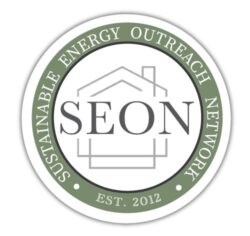Spray Foam Insulation is made entirely of fossil fuels, can cause many costly problems with your house and your health – and buyer beware. Always contact a certified high-performance builder before you have spray foam insulation installed. Here are 15 facts that you should know before you consider using spray foam for insulation in a new home or a new remodel.
1. DID YOU KNOW that if you have spray foam insulation in your home, it’s important to take proactive steps to monitor moisture levels and ensure the integrity of your roof? Even if you think your house is moisture free, all homes contain a certain amount of water vapor in the air. This moisture can originate from sources like wet basements, as well as everyday activities such as cooking, bathing, and even our own breath and perspiration. It’s important to consider proper moisture management when designing and maintaining a home to prevent issues like condensation, mold growth, and structural damage. By implementing effective ventilation and moisture control strategies, homeowners can ensure a healthier and more comfortable indoor environment. Recommended:
a. Invest in a moisture meter with an alarm and place it in your attic.
b. Schedule roof inspections every five years to be conducted by professionals equipped with infrared cameras so they can help identify any potential moisture issues.
2. DID YOU KNOW that Efficiency Vermont (or other efficiency nonprofits in your state) offers support for homeowners seeking to improve energy efficiency? They have a dedicated hotline and knowledgeable customer support agents who can assist with your inquiries. Plus, you can take advantage of rebates and incentives to make your home more comfortable and reduce energy costs.
3. DID YOU KNOW that it is highly recommended to have a blower door test conducted before building a new home or undertaking a retrofit project? A blower door test helps assess the airtightness of a building and identifies any air leaks that may exist. By performing this test early on, you can address potential issues and ensure a more energy-efficient and comfortable living space. Whether you are starting a new construction or planning a retrofit, don’t forget to include a blower door test as part of your preparation process.
4. DID YOU KNOW that the building science experts who are certified to use spray foam have witnessed concerns about shoddy workmanship for years? Some industry experts have highlighted even more issues related to inexperienced contractors rushing into the spray foam field during the 2008 financial crisis, resulting in a surge of poor installations and compromised foam quality. The resulting price wars and lack of expertise have led to a rise in problems. This emphasizes the importance of selecting experienced and reputable professionals for spray foam installations to ensure the highest quality workmanship.
5. DID YOU KNOW that it isn’t out of the norm to discover gaps, voids, and cracks in spray foam insulation several years after installation? In some cases, homeowners have faced the challenge of contacting the original contractor, only to find out that the spray foam company responsible for the installation is no longer in business. This highlights the importance of thorough inspection and addressing any issues promptly to ensure the effectiveness and longevity of spray foam insulation in your home.
6. DID YOU KNOW that despite its reputation, spray foam insulation is not nearly as environmentally friendly as it seems? While manufacturers are making efforts to reduce its environmental impact by using blowing agents with lower global warming potential, spray foam is still derived entirely from fossil fuels. This means that it has a high amount of “embodied carbon,” resulting in significant greenhouse gas emissions during its production.
7. DID YOU KNOW that Efficiency Vermont reported that it would take approximately 10 years of energy savings for a home with spray foam insulation to match the carbon savings of a home using alternative insulation materials like dense-pack cellulose and rigid foam board. It’s important to consider the overall environmental impact when making insulation choices and explore alternatives that align with sustainability goals.
8. DID YOU KNOW that the building standards of LEED (Leadership in Energy and Environmental Design) have historically given credit for the use of spray foam insulation due to its high R-Value, which measures its insulation effectiveness per inch of thickness. This was the case even in earlier years when the potential drawbacks of spray foam were not widely known. It highlights the importance of staying informed about evolving knowledge and advancements in insulation options to ensure sustainable and environmentally friendly building practices.
9. DID YOU KNOW that unlike traditional insulation options like rock wool or fiberglass, spray foam insulation is a permanent installation that cannot be easily undone? Once spray foam is applied, it adheres permanently to the surface, making it challenging to address any issues that may arise in the future. This can pose difficulties in detecting water leaks, mold, or damage concealed beneath the foam layer. Inspectors often need to physically remove sections of the foam to access the underlying framing for evaluation, which can be costly and impractical for most homeowners.
10. DID YOU KNOW that mold issues were not as prevalent fifty years ago? According to experts, homes had better natural ventilation, allowing moisture to escape and preventing mold growth. However, with changes in construction practices, such as the use of spray foam insulation, homes have become more airtight, limiting natural airflow. One particular concern highlighted by experts is the sealing of soffit vents with foam, which hinders proper air circulation. As a result, moisture can become trapped inside the house, creating an environment conducive to mold growth. Due to the increased efficiency of modern homes, the only way to address trapped moisture is by utilizing manmade devices like dehumidifiers or air exchangers. This emphasizes the importance of understanding how insulation choices can impact the overall moisture management of a home.
11. DID YOU KNOW that while spray foam may be suitable for certain areas like old, rubble-stone cellars and basements, building science experts do not recommend its use in other parts of the home? Surprisingly, spray foam is frequently specified for insulating cathedral ceilings, attics, and walls, despite the associated risks. Homes built before the 1950s and low-income homeowners face particular challenges, as they may lack the resources to hire professionals with building science training. Unfortunately, homeowners have limited protection against subpar workmanship, and those who encounter damage and mold years later often have limited options for recourse. It’s crucial for homeowners to be aware of these considerations when deciding on insulation choices for their homes.
12. DID YOU KNOW that until recently, Vermont was one of the few states that didn’t have a requirement for contractors to register with the state? This meant that homeowners had limited avenues to address issues or file complaints against residential contractors, including those involved in weatherization projects. It was only last year that legislation was passed in Vermont to address this and make housing more affordable. However, even with the new law in place, most spray foam jobs still fall under the $4,000 threshold. On the other hand, for jobs exceeding $10,000, contractors are now required to have a contract in place as mandated by the law. State officials have also introduced a registry to further enhance oversight and address concerns related to contractor practices. It’s crucial for homeowners to be aware of these regulatory factors when engaging contractors for their projects.
14. DID YOU KNOW that the installation of spray foam insulation has created a regulatory void, leading to concerns about potential long-term damage to homes and the financial burden on homeowners? The lack of standardized guidelines and oversight has resulted in a wide range of installation practices and quality, raising questions about the safety and efficacy of spray foam insulation. The U.S. Environmental Protection Agency acknowledges the need for further research, as improper chemical mixture or temperature during installation can lead to curing failures and ongoing off-gassing of potentially harmful chemicals. Troubling reports have emerged, including cases of homeowners becoming ill and even having to abandon their homes due to adverse health effects from spray foam insulation. This has prompted numerous health complaints and legal actions against spray foam manufacturers. The unpredictable nature of spray foam installation highlights the importance of thorough research and consideration of alternative insulation options to ensure the health and well-being of homeowners.
15. DID YOU KNOW that effective moisture management is essential when choosing spray foam insulation for your home? If moisture becomes trapped within the walls, it can cause extensive damage such as rot, structural issues, and the growth of mold. To prevent these problems, homeowners should take proactive measures to address any existing moisture issues and ensure proper moisture management alongside the installation of spray foam insulation. This may include addressing water leaks, improving ventilation, and implementing moisture barriers to maintain a healthy and durable living environment. By prioritizing moisture management, homeowners can protect their investment and ensure the long-term effectiveness of spray foam insulation.
16. DID YOU KNOW that there are concerns regarding the sustainability of spray foam insulation? Spray foam is made from fossil fuels, which contributes to its embodied carbon footprint. This reliance on fossil fuels during production raises questions about its long-term environmental impact. In comparison, other insulation options may offer more immediate carbon savings. It’s important to note that while Efficiency Vermont is dedicated to reducing energy waste and helping homeowners save money, they do not currently factor in embodied carbon in their recommendations. As the focus on sustainability grows, homeowners may want to consider insulation alternatives that prioritize lower embodied carbon and renewable materials to minimize their environmental footprint.DID YOU KNOW that there are concerns regarding the sustainability of spray foam insulation? Spray foam is made from fossil fuels, which contributes to its embodied carbon footprint. This reliance on fossil fuels during production raises questions about its long-term environmental impact. In comparison, other insulation options may offer more immediate carbon savings. It’s important to note that while Efficiency Vermont is dedicated to reducing energy waste and helping homeowners save money, they do not currently factor in embodied carbon in their recommendations. As the focus on sustainability grows, homeowners may want to consider insulation alternatives that prioritize lower embodied carbon and renewable materials to minimize their environmental footprint.
FIND A CERTIFIED HIGH PERFORMANCE BUILDER TO HELP YOU BEFORE YOU CONSIDER SPRAY FOAM INSULATION

